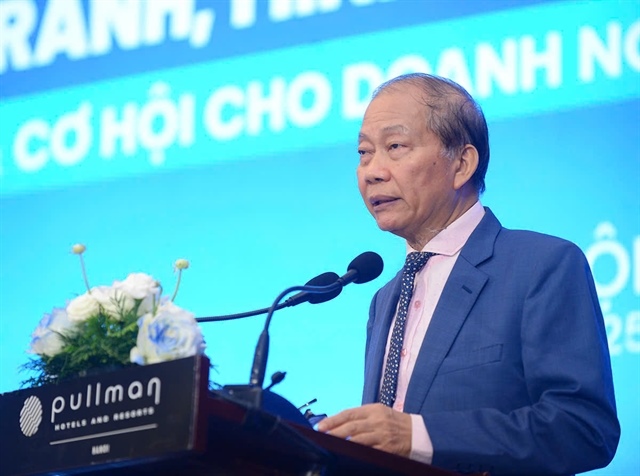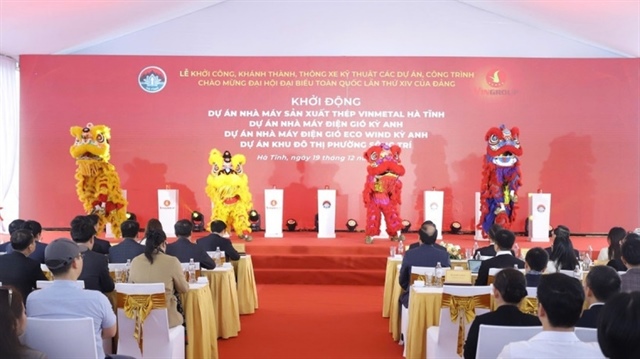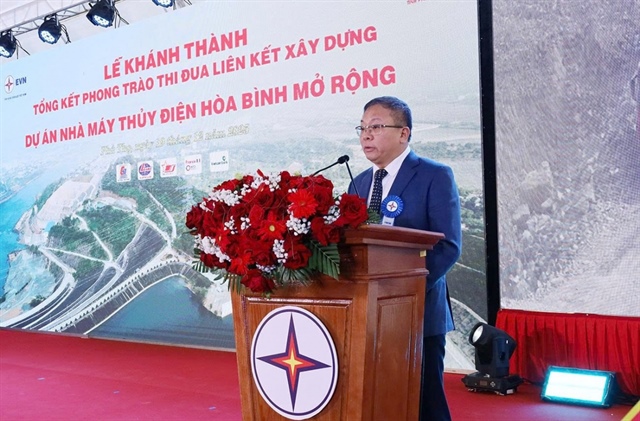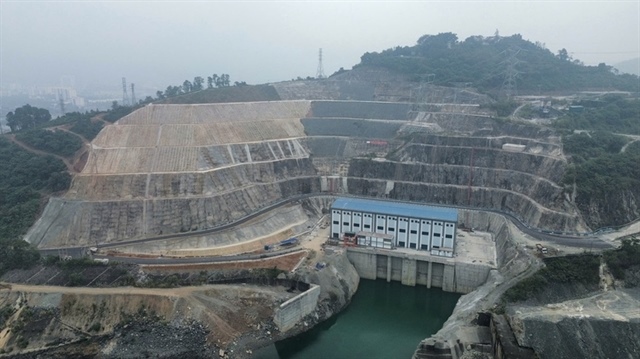Foreign brewers tap into robust domestic market
Foreign brewers tap into robust domestic market
Foreign breweries’ thirst for the Vietnamese beer market has by no means been quenched.
Heineken Vietnam Brewery Vung Tau JSC (Heineken Vietnam) last week received the investment certificate for the 12-fold expansion of its factory in My Xuan A Industrial Zone after it bought the Vung Tau brewery in southern Vietnam from Carlsberg last year.
Under said agreement, Heineken Vietnam will spend VND4.7 trillion ($185 million) to expand the factory and increase its capacity to over 610 million litres of beer per year. In July 2016, Heineken Vietnam took over the brewery in question from Carlsberg. At that point, the factory had a capacity of 50 million litres per year. This movement was in line with Heineken’s strategy, as it currently holds roughly a fifth of the Vietnamese market after 25 years in the country. Heineken is eyeing a push into the north to expand its footprint.
Frans Eusman, head of Heineken’s operations in Asia, said 2016 was “spectacular” and Vietnamese growth is sure to continue. He added that Heineken has a clear plan to grow sustainably, and that growth could come from further acquisitions or the expansion of existing operations.
Heineken’s move is the latest and most dramatic of all the foreign brewers in Vietnam.
In January 2016, Carlsberg invested in a fourth canning line in its Hue beer factory. This facility has the largest capacity of all the Carlsberg factories in Vietnam. The investment raised Carlsberg’s capacity in central Vietnam to 370 million litres a year.
At the end of 2015, Thai companies Singha and Masan Consumer Holdings officially started production at their joint, VND1.6 trillion ($70 million), 100-million-litre-a-year factory in the Mekong Delta province of Hau Giang. The company said the facility could be expanded to produce 150 million litres a year.
In May 2015, Anheuser-Busch InBev (AB InBev) took the first step into Vietnam with the opening of its VND 660 billion ($30 million), 100-million-litre-a-year factory in the southern province of Binh Duong.
Late last year, Nguyen Thai Ha, supply chain director at Carlsberg Vietnam, told VIR, “We will continue to invest more to expand our plant in Hanoi, which now has an annual capacity of 100 million litres. We will seek a new location for the Hanoi plant, as our land leasing contract with local authorities terminates in the next eight years.”
Besides expanding capacity, foreign brewers are also closely watching the equitisation of Saigon Alcohol Beer and Beverage Corporation (Sabeco) and Hanoi Alcohol Beer and Beverage JSC (Habeco). Potential investors in Sabeco include Japan’s Kirin Holdings, Thai Beverage Public Company Limited (ThaiBev), and Dutch beverage giant Heineken.
Heineken is also eying Habeco, as is the Japanese beverage company Suntory, Carlsberg, and Chaleo Yoovidhya – the Thai billionaire and co-creator of the Red Bull brand of energy drinks.
NASDAQ on February 8 reported that Carlsberg is very interested in the potential procurement of Habeco shares. Carlsberg expects to submit a bid in March or April this year.
“The equitisation of Sabeco and Habeco will potentially lead to changes and opportunities within the Vietnamese beer market, and we are following these developments closely,” said Eusman.
The reason for the interest is that there is a lot of potential in the two companies. Not only do the two dominate the domestic market – Sabeco holds the biggest domestic market share and Habeco holds the third biggest – but according to Viet Capital Securities (VCSC), because the two companies are not operating at full efficiency, the potential for investors could be even higher.
“For Sabeco and Habeco, a transition in ownership and management may be a real catalyst to materialising their high earnings potential,” said VCSC in a report released in November 2016.
“Although we understand that a focus on the premium segment supports its margins, the fact that Heineken Vietnam generates a much higher operating profit margin (greater than 30 per cent in 2015) compared to Sabeco (14 per cent) and Habeco (11 per cent) implies that there is plenty of headroom for improvement in the latter two,” VCSC explained. “Tightening up the supply chain, consolidating ownership at manufacturing and trading subsidiaries,
propping up staff productivity, maintaining more control of the distribution system, and marketing more effectively are discernible areas for improvement.”
In 2016, domestic production was slightly over three-and-a-half billion litres of beer. The Vietnam Beer-Alcohol-Beverage Association (VBA) expects the figure at about four billion litres of beer in 2017, up 10 per cent on-year.
Beer accounts for 94 per cent of the alcoholic beverage consumption in Vietnam. According to Canadean, a research company focusing on international soft drink and alcoholic beverage industries, the Vietnamese alcoholic beverage market has experienced a rapid growth of 6.4 per cent per year for the past 10 years.
VCSC expects solid growth in the beer market thanks to a young population and rising income.
“Forecasts point to 4-5 per cent volume growth per annum in the next five years for Vietnam’s beer industry, and value growth should be higher than that given the ongoing trend toward premium products. With a median age of 30 and high economic growth, Vietnam has a young, vibrant consumer class. The country is estimated to have an additional one million people reaching the legal drinking age of 18 every year,” it said.



















